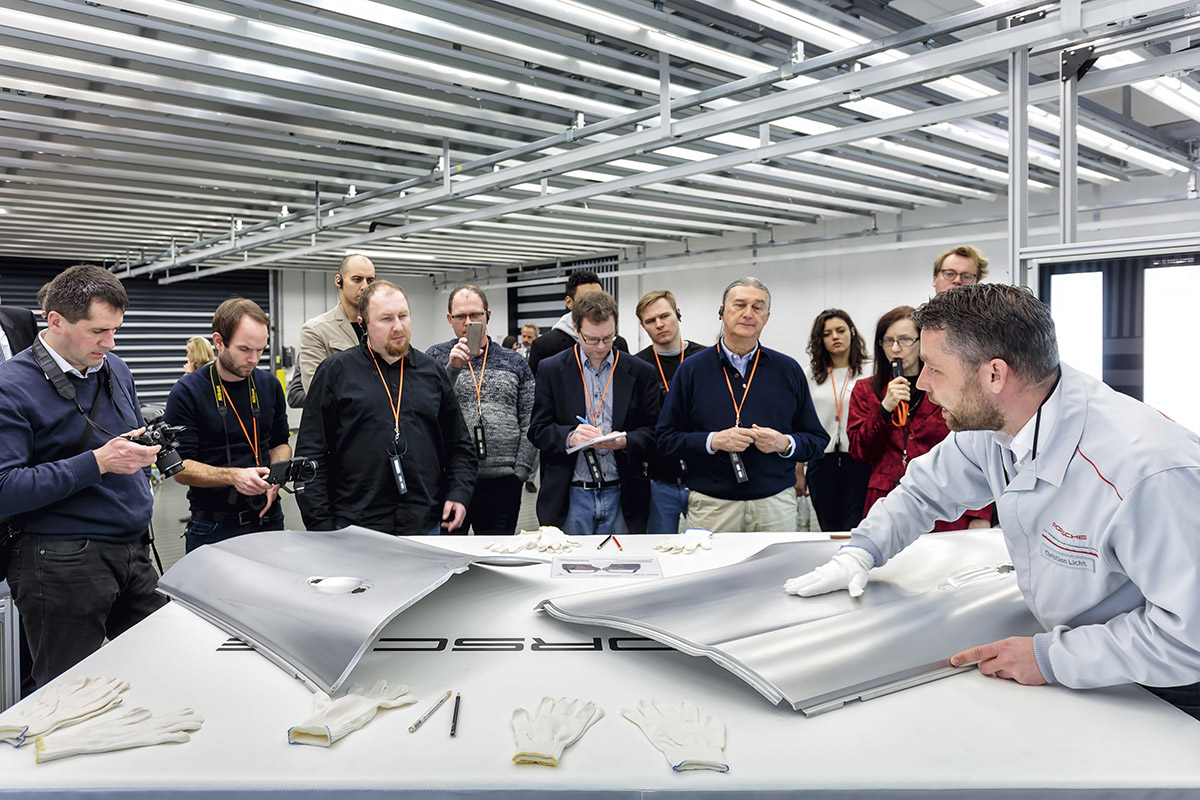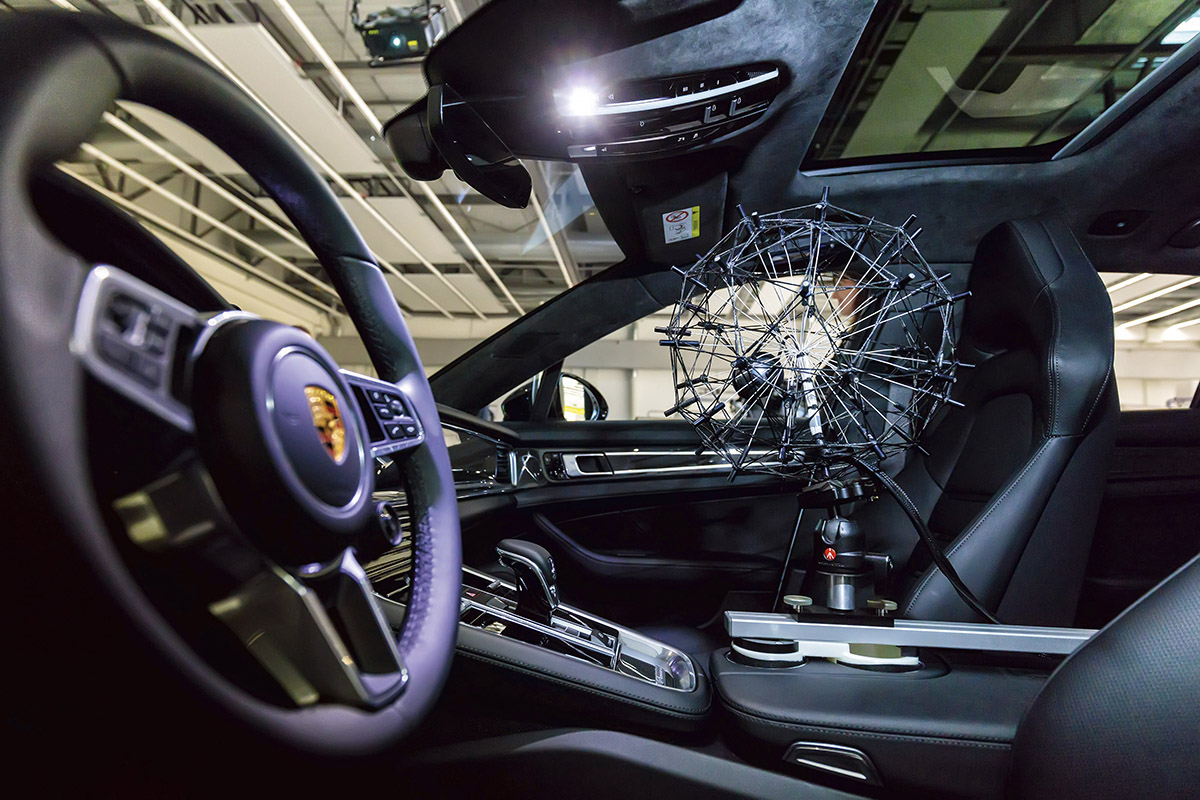An exclusive look at the changing face of Porsche’s award-winning second facility.
Words: Sean Libbey
Photos: Porsche AG
Leipzig: Porsche’s newest and most significant production plant outside of Zuffenhausen is the result of a £32 million investment at the turn of this century. The Saxony site is a spectacular facility equipped with vast production lines, customer service centre and a proving ground for testing vehicles. Although that description doesn’t really do it justice – the 6km track is FIA-certified and boasts a selection of the world’s most iconic corners, including the Nürburgring’s Karussel and Laguna Seca’s Corkscrew.
The Leipzig facility has so far produced no fewer than 341,000 Macans, 738,000 Cayennes and 207,000 Panameras. All 1270 examples of the Carrera GT were also built at Leipzig, which won the JD Power awards for best production plant in Europe in 2014 and 2017.
Some 600 cars are now produced every day on site, and in the very near future we’ll see the first non-Porsche cars constructed here too. Starting later this year, the Bentley Continental will be built in Leipzig before being shipped to Crewe for final assembly. This is a crucial site for both Porsche and the wider Volkswagen Audi Group going forward.

Gerd Rupp, Chair of the Executive Board at Porsche Leipzig since June 2017, explains the facility’s significance: “We as a company have invested heavily in Leipzig for the past 19 years, not just financially but also culturally. We have a big vision for the area, with a new push today for sustainable production,” he says.
“We have 21 populations of bees at the site, plus oxen and wild ponies. We’re also in favour of resource saving: we have solar energy fields and energy-efficient robots on the production line. Mixing this with innovation ensures we will become even better in future, particularly with our push towards digitisation.”
Central to this vision at Leipzig will be a focus on customer service and quality in production processes. Head of Corporate Quality Frank Moser says: “Top quality is a core value at Porsche. Our customers pay a premium for their cars so they expect it.”

Quality, Porsche says, is established in four key areas: emotional (referencing its design, performance, sound), functional (reliability, software and connectivity), service (customer care from delivery to maintenance), and look and feel.
The process of monitoring quality at Leipzig is exhaustive. We join the ‘look and feel’ inspection of a freshly cut and pressed door for a Panamera. First is the visual inspection – imperfections such as dents should be fairly easy to spot – followed by a feel test by an engineer wearing a soft cloth glove.
Once a panel is fitted to the car’s body, another look and feel inspection is carried out to make sure all gaps to other panels are consistent and comply with tolerance limits.
“Perfect fitting of panels is important, not just visually but in terms of performance,” Frank says as we study a newly fitted door. If a panel is sitting proud or is under-flushed, this will make a difference to how the car performs on the autobahn.” Porsche allows for a tolerance of plus or minus 0.5mm for all of its panels, which is checked and recorded by hand.

Another dedicated site, the Qualitätszentrum, goes into even more minute detail. Two robot arms slowly work their way around a car, checking the measurements of every conceivable panel. Between human and robot, over 15,000 measurement points are examined per model.
Adding belt to braces, eight cars of each model per year are also completely deconstructed and all 6000 bonds are checked.
As advanced and impressive as this seems at first hand, what Porsche has in store leaves these processes in the shade: “The vehicle of the future needs to learn to see, understand and communicate,” Gerd tells us. “This is why we have implemented what we are calling Strategy 2025. Our mission is to redefine quality.”
Much of this involves Augmented Reality and Virtual Reality programmes currently being implemented in Leipzig’s new ‘Inno-Space’ suite. Here, the quality-control technician needs a computer tablet app instead of a cloth glove. The CAD data for the car being checked is read into an app, while the tablet’s camera is held over a section of the vehicle. The CAD image is superimposed onto the live image, and any deviations or flaws in the bodywork are immediately noticeable.

Today a human will walk around a car and manually appraise it, then they have to type up all notes and submit a report. Here, the report and pictures are ready at once via the app. The time saving here is obvious, but Andreas Schmidt, Head of Quality at Leipzig, highlights other key benefits to AR, too. “The fact that the tablet is networked allows us to do things like quality audits with our suppliers via video conference at short notice.”
VR, meanwhile, is being trialed for pre-series cars. Here, an engineer uses a headset to take a virtual look around a new engine, for example. The user can dissect the engine in a matter of seconds, drilling right down into the unit’s minute componentry.
Similarly, the software allows technicians to take a virtual tour of the cockpit of a prototype. This allows Porsche to try the new cabin before it’s actually built, affording teams an opportunity to optimise the vehicle’s ergonomics and layout at a much earlier stage.
The company is adamant that this influx of AR and VR will benefit employees, rather than replace them. “We will always need engineers,” says Frank: “In future we may require a different type of engineer, but our staff are very skilled and very forward-thinking.”
Manufacturing at Leipzig is undergoing fast and radical change, but on today’s evidence, the future of Porsche is looking more robust and dynamic than ever.